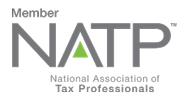by | Aug 31, 2021 | Tax Tips and News
Small businesses that make their website compliant with Americans with Disabilities Act standards could qualify for the disabled access tax credit. From business clients to your own tax practice, this credit can help cover some of the associated expenses.
What is the Americans with Disabilities Act?
According to ADA.gov, the Americans with Disabilities Act guarantees that those with disabilities will be able to:
- Enjoy employment opportunities
- Purchase goods and services
- Participate in state and local government programs and services
To that end, the ADA lays out three general criteria that are used to determine if someone qualifies for these protections:
- A physical or mental impairment that substantially limits one or more major life activities
- A person who has a history or record of such an impairment, or
- A person who is perceived by others as having such an impairment
ADA protections also include website accessibility. Just like not making your business wheelchair accessible, failing to make your site compliant can potentially put you at risk of a lawsuit. Before you say, “That won’t happen to me,” consider a June 2021 article by the National Law Review reporting a 75 percent increase in ADA-related lawsuits for the year.
After all, millions of Americans use online retailers to purchase everything from televisions to toilet paper every day, and the number of online-only businesses keeps growing. So, making your website ADA compliant now can help you better serve more customers and potentially reduce the risk of litigation.
How do I make my website ADA compliant?
The website accessibility standards suggest a wide range of solutions, from supporting screen readers to including captions on video content. However, that comprehensive nature can make it difficult to make your website compliant, which is probably why the National Law Review recommends “[working] with trusted law firms and advisors” to navigate your responsibilities.
As for actually building your site, the team—whether in-house or third-party—needs to understand how to implement that advice during development and when applying updates. Further, be sure to schedule regular compliance checkups after publication. If that sounds complicated and time consuming, the good news is that there are services and online tools that can help.
How much is the disabled access tax credit worth?
The disabled access tax credit is a non-refundable credit worth up to $5,000 for qualifying business expenses. The instructions for Form 8826 specifically identify four categories of qualified expenditures:
- To remove barriers that prevent a business from being accessible to or usable by individuals with disabilities;
- To provide qualified interpreters or other methods of making audio materials available to hearing-impaired individuals;
- To provide qualified readers, taped texts, and other methods of making visual materials available to individuals with visual impairments; or
- To acquire or modify equipment or devices for individuals with disabilities
Keep in mind that expenses claimed to qualify for the credit cannot be used to benefit from another tax credit or deduction. (Or, as the specific instructions for Line 6 begin: “Denial of double benefit.”)
How do small businesses qualify for the disabled access tax credit?
To qualify for the disabled access tax credit, a small business must meet one of the following criteria listed on Form 8826, Disabled Access Credit:
- Had gross receipts (including that of any predecessor) for the preceding tax year that did not exceed $1 million
- Had no more than 30 full-time employees during the preceding tax year
While most small businesses will file the 8826, some pass-through entities can instead claim the disabled access credit on Form 3800, General Business Credit.
Sources: ADA.gov; Form 8826, Disabled Access Credit; National Law Review
– Story provided by TaxingSubjects.com
by | Aug 28, 2021 | Tax Tips and News
October is just a month away, so it’s time once again for an important announcement by the Internal Revenue Service: The federal fourth quarter interest rates. Despite the seasons changing, it looks like rates are staying the same.
What are the federal interest rates for tax overpayment and underpayment in Q4 2021?
The IRS this week published Revenue Ruling 2021-17, detailing the Q4 tax overpayment and underpayment interest rates for individuals and corporations from October 1, 2021, to December 31, 2021:
- 3% for overpayments (2% in the case of a corporation)
- 0.5 % for the portion of a corporate overpayment exceeding $10,000
- 3% percent for underpayments
- 5% percent for large corporate underpayments
According to the release, the September 13 Internal Revenue Bulletin will feature the revenue ruling that outlines the Q4 interest rates.
How are the quarterly interest rates calculated?
The IRS calculates the quarterly overpayment and underpayment rates by adding a number of percentage points to the short-term rate, based on whether it’s for a taxpayer or corporation:
Quarterly Overpayment Interest Rates
- Short-term rate plus 3 percentage points for individual taxpayers
- Short-term rate plus 2 percentage points for corporations
- Short-term rate plus 0.5 percentage points for corporations overpaying by more than $10,000 in a taxable period
Quarterly Underpayment Interest Rates
- Short-term rate plus 3 percentage points for individual taxpayers and corporations
- Short-term rate plus 5 percentage points for large corporations
As for changes in the quarterly rate, the IRS predictably bases them on data gathered from the preceding quarter: “The interest rates announced today are computed from the federal short-term rate determined during July 2021 to take effect August 1, 2021, based on daily compounding.”
Source: IR-2021-173
– Story provided by TaxingSubjects.com
by | Aug 26, 2021 | Tax Tips and News
As more employers utilize the employee retention credit to keep their workers employed—and as the pandemic continues to be a factor in American business—the Internal Revenue Service continues to issue guidance on who qualifies for the credit and how best to apply it.
The latest round of guidance from the IRS includes clarification for employers who pay qualified wages after June 30, 2021, and before Jan. 1, 2022; as well as instructions on various issues that apply to the credit in 2020 and 2021.
The IRS also declared a safe harbor that allows employers to exclude certain items from gross receipts only for the purpose of determining their eligibility for the employee retention credit.
Changes were made to the employee retention credit by the American Rescue Plan Act of 2021 (also known as ARP), and are outlined in Notice 2021-49. These changes apply to the third and fourth quarters of 2021 and include:
- Making the credit available to eligible employers who pay qualified wages after June 30, 2021, and before Jan. 1, 2022.
- Expanding the definition of eligible employer to include recovery startup businesses.
- Modifying the definition of qualified wages for severely financially distressed employers.
- Providing that the employee retention credit does not apply to qualified wages considered as payroll costs in connection with a shuttered venue grant or a restaurant revitalization grant.
The IRS also uses Notice 2021-49 to answer various questions that have arisen about applying the employee retention credit for tax years 2020 and 2021.
These issues include:
- The definition of full-time employee and whether that definition includes full-time equivalents.
- The treatment of tips as qualified wages and the interaction with the credit for portion of employer Social Security taxes paid with respect to employee cash tips.
- The timing of the qualified wages deduction disallowance and whether taxpayers that already filed an income tax return must amend that return after claiming the credit on an adjusted employment tax return.
- Whether wages paid to majority owners and their spouses may be treated as qualified wages.
The safe harbor feature is set forth in Revenue Procedure 2021-33 and allows employers to exclude some amounts from gross receipts—but only for the purpose of determining whether they qualify for the employee retention credit.
Eligible items that may be excluded are the amount of the forgiveness of a Paycheck Protection Program (PPP) loan; Shuttered Venue Operators Grants under the Economic Aid to Hard-Hit Small Businesses, Non-Profits, and Venues Act; and Restaurant Revitalization Grants under the American Rescue Plan Act of 2021.
Applying the safe harbor couldn’t be easier: the employer has only to exclude these amounts when calculating their quarterly eligibility for the credit on their employment tax return.
Employers who are eligible for the credit must report their total qualified wages and the related health insurance costs that go along with them on their employment tax returns. Usually, Form 941, Employer’s Quarterly Federal Tax Return is used.
If a reduction if the employer’s employment tax deposits isn’t enough to cover the credit, the employer can file Form 7200, Advance Payment of Employer Credits Due to COVID-19, to qualify for an advance payment from the IRS.
For more information on the Employee Retention Credit, see these resources from the Internal Revenue Service:
Source: COVID Tax Tip 2021-123
– Story provided by TaxingSubjects.com
by | Aug 26, 2021 | Tax Tips and News
Impersonating the Internal Revenue Service is big business for identity thieves. These phishing scams often combine fear of the agency with urgency (and threats), and those who fall for them can soon find their information or money stolen. That’s why the IRS this week highlighted how they communicate with taxpayers.
Generally, the IRS provides tips for figuring out if a phone call, letter, email, or text message is a phishing scam. Those signs can be specific to the particular scam or common amongst them all, and learning to spot phishing is one of the best ways to protect your information. Another key component is knowing how government agencies like the IRS actually contact Americans.
How will the IRS contact me?
Typically, the first communication sent by the IRS is a letter. There are myriad tax-related reasons someone might receive a letter from the IRS, and some letters will require follow-up by an agent: usually a phone call to “confirm an appointment or to discuss items for a scheduled audit.”
However, there are times when an IRS representative needs to show up in-person to talk to an individual taxpayer or business owner. According to the IRS, these “unannounced visits” are primarily “to discuss taxes owed, delinquent tax returns, or a business falling behind on payroll tax deposits.” And they may even ask the taxpayer to pay back taxes (more on that in a moment).
As for digital communication, IRS representatives may occasionally email taxpayers—but the agency stresses that’s not how they “normally initiate contact.”
How won’t the IRS contact me?
The IRS does not send texts or social media messages to taxpayers, period. That means any private messages you receive on Facebook, LinkedIn, Twitter, Instagram, or TikTok are not from the IRS.
What should I do if I think an IRS message is a phishing scam?
If you suspect an IRS letter is fake, you can check it against the list of legitimate letters and notices on IRS.gov. The “Understanding Your IRS Notice or Letter” page features a search tool that contains most letters and notices issued by the agency—some of which even have sample PDFs. When a letter doesn’t appear in the search, the IRS suggests calling 800.829.1040 to speak with an IRS representative.
An in-person visit from the IRS may sound stressful, but there are a couple ways you can determine if the person on your doorstep is the genuine article:
- IRS representatives can always provide two forms of official credentials: a pocket commission and a Personal Identity Verification Credential
- Payment will never be requested to a source other than the U.S. Treasury
Finally, the IRS stresses that you simply should not reply to emails and social media messages, even if they look and sound official. Remember, phishing scams want your personal information, and they’re good at getting tricking people into providing it once they establish a back-and-forth conversation.
(While not explicitly included in this press release, it’s also important to remember to never reflexively click on attachments and hyperlinks in digital messages. These can contain malware or take you to a fake website that is built to steal your information.)
To read the full press release, check out the source link below.
Source: IRS Tax Tip 2021-124
– Story provided by TaxingSubjects.com
by | Aug 25, 2021 | Tax Tips and News
A new feature just added to the IRS’ Child Tax Credit Update Portal allows users receiving the advance credit payments to change their mailing addresses. The Internal Revenue Service says this should speed up the process for taxpayers who get their advance payments by paper check, heading off late-arriving checks or even having a check returned as undeliverable.
For new addresses to take effect by the time September payments are sent on the 15th, address changes have to be posted on the portal before midnight Eastern Time on Monday, August 30.
Taxpayers can still make changes after the August 30 deadline, but that change won’t take effect until the following monthly payment in October.
Stay current with the IRS
When the Child Tax Credit Update Portal is used to change a taxpayer’s mailing address, the IRS then uses the new address for all future correspondence. As we mentioned, this can be important for taxpayers who get their advance credit payments by paper check in the mail, but others benefit from having current addresses on file as well.
The IRS says it will mail a year-end summary—Letter 6419—to all the taxpayers who received advance Child Tax Credit payments in 2021. For this summary to reach the correct taxpayers, it’s vital that these families give their correct mailing addresses to the IRS.
Letter 6419 is important to these families because they’ll need the letter when they fill out their 2021 income tax return next year.
Since in most cases, families will receive only half of their available credit through the advance payments, taxpayers will have to claim the remaining credit on their 2021 return – and that’s where Letter 6419 comes in.
Even more features coming to the portal
The Internal Revenue Service says it’s continuing to develop the Child Tax Credit Update Portal to better serve the needs of taxpayers. The portal, which is available only on IRS.gov, already allows taxpayers to verify eligibility for the advance Child Tax Credit. Once verified, users can choose to:
- Switch from receiving a paper check to direct deposit;
- Change the account where their payment is direct deposited; or
- Stop monthly payments for the rest of 2021.
Features of the Child Tax Credit Update Portal, however, won’t stop there. The IRS says it’s working on features that will allow users to add or remove children in most situations, to report a change in marital status, and to report a significant change in income.
For the latest information on the Child Tax Credit and its advance payments, see the IRS’ special Advance Child Tax Credit 2021 web page at IRS.gov/childtaxcredit2021.
The web page has updated frequently asked questions and Publication 5549, IRS User Guide: Child Tax Credit Update Portal, along with direct links to the portal and to the Non-Filer Sign Up Tool and the Child Tax Credit Eligibility Assistant.
Source: IR-2021-171
– Story provided by TaxingSubjects.com










